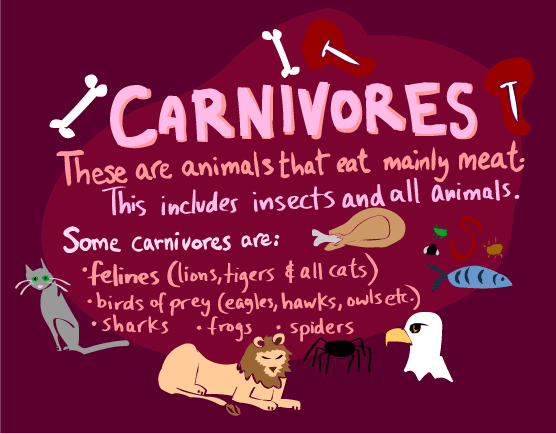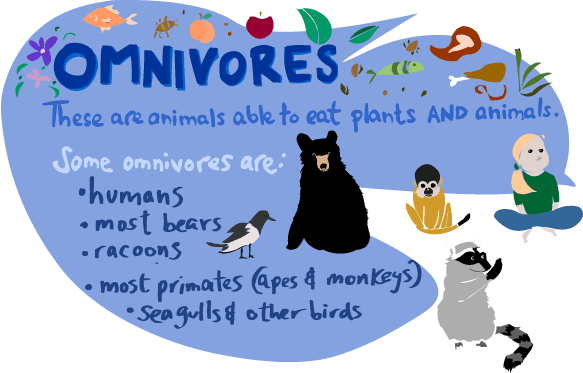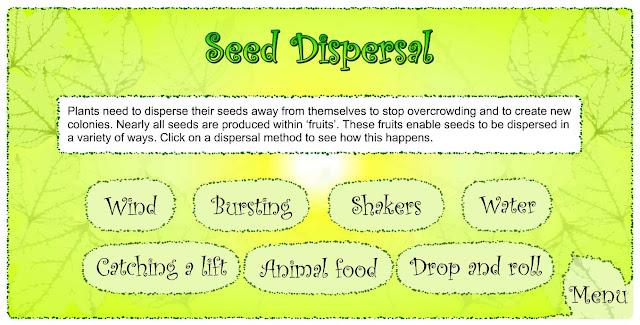Tuesday 29 November 2011
Food Web
- A food web is formed when many food chains found in a habitat are linked together.
- A food web is important because it controls the number of living things in a habitat.
- When the food web is not balanced, the population of animals can either become more or less depending on the type of food that the animals eat.
 |
Herbivores, Carnivore and Omnivore
Based on heir eating habits, animals can be divided into three groups: Herbivore, Carnivore and Omnivore.
Herbivores are animals that only eat plants. Examples of such animals are grasshoppers, caterpillars, rabbits, goats and cows
Carnivores are animals that only eat animals. Examples of such animals are snale, eagles, tiger and lions.
Omnivores are animals that eat both plants and animals. Examples of such animals are chicken, ducks, fish and bears.
Herbivores are animals that only eat plants. Examples of such animals are grasshoppers, caterpillars, rabbits, goats and cows
 |
| Cow |
 |
| Goat |
 |
| Grasshooper |
 |
| Rabbit |
 |
| Caterpillar |
Carnivores are animals that only eat animals. Examples of such animals are snale, eagles, tiger and lions.
 |
| Lion |
 |
| Snake |
 |
| Tiger |
 |
| Eagle |
Omnivores are animals that eat both plants and animals. Examples of such animals are chicken, ducks, fish and bears.
 |
| Bear |
 |
| Chicken |
 |
| Duck |
Chapter 3- Food Chain and Food Web
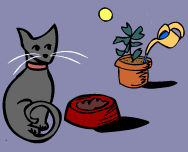 The Food Chain
The Food ChainEvery living thing needs energy in order to live. Everytime animals do something (run, jump) they use energy to do so.
Animals get energy from the food they eat, and all living things get energy from food. Plants use sunlight, water and nutrients to get energy (in a process called photosynthesis). Energy is necessary for living beings to grow.
Animals get energy from the food they eat, and all living things get energy from food. Plants use sunlight, water and nutrients to get energy (in a process called photosynthesis). Energy is necessary for living beings to grow.
A food chain shows how each living thing gets food, and how nutrients and energy are passed from creature to creature. Food chains begin with plant-life, and end with animal-life. Some animals eat plants, some animals eat other animals.
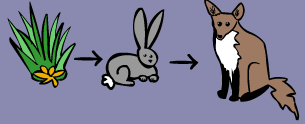
A simple food chain could start with grass, which is eaten by rabbits. Then the rabbits are eaten by foxes.
Bigger Food Chains
Here's another food chain, with a few more animals. It starts with acorns, which are eaten by mice. The mice are eaten by snakes, and then finally the snakes are eaten by hawks. At each link in the chain, energy is being transferred from one animal to another.

There can be even more links to any food chain. Here another animal is added. It goes
Grass to grasshopper to mouse to snake to hawk.

Monday 28 November 2011
Types of dispersal
There are a number of modes or ways by which seeds may be dispersed, these include:
- Wind dispersal
- Water dispersal
- Animal dispersal
- Mechanical dispersal
Plants using the wind to disperse their seeds may exhibit the following characteristics:
|  Fowl foot grass (Eleusine indica) has numerous small light seeds | |
|  Oleander seed with 'parachutes' | |
|  Closed mohogany pod in tree. |  Mohogany pods open on the tree to release seeds. Mohogany pods open on the tree to release seeds. |
 | Mahogany (Swietenia mahagoni) seeds below spiral through the air like helicopter rotors.  | |
|  Foliage, flower, fruit and seed of the Jacaranda |
Plants using water to disperse their seeds may exhibit the following characteristics:
 Coconut trees (Cocos nucifera) growing near the sea |
|  A young manchineel tree (Hippomane mancinella) growing on the beach |
 Coconuts have hollow centers and have been known to float hundreds of miles across the sea before rooting successfully |
|  Manchineel fruit rot to leave buoyant, woody, star shaped pits that float in water |
Plants using animals to disperse their fruit may exhibit the following characteristics:
| ||
 Jackfruit fruit in tree |  Mammee apples have edible orange flesh and large seed |  A cluster of grapefruits |
| ||
 "Burr grass" (Cenchrus sp.) | Burr grass fruit may cling to clothing or animal fur. The fruit may then fall off or be removed at another location. Seeds from these fruit may then germinate at the new location, thereby spreading the plant around.. |  Burr grass fruit clinging to clothing. Burr grass fruit clinging to clothing. |
Mechanical dispersal is sometimes also referred to as self-dispersal.
Plants that use mechanical means to disperse their seeds may exhibit the following characteristics:
| ||
 Sandbox seed capsule | The Sandbox tree disperses its fruit mechanically |  Seed capsule ruptures suddenly and releases flat round seeds |
 River tamarind (Leucaena leucocephela) seedpods | Mechanical dispersal is common in many legumes (like peas and beans) |  Dry legume seedpods split suddenly along their seams to scatter their seeds |
 | Immature (green), mature (brown), and split river tamarind fruit on tree. |
The survival of plant species
Seed dispersal is the movement or transport of seeds as far away from the parent plant as possible.
The seeds and fruits of plants must be dispersed is to ensure that the new plants will be able to grow healthily and later produce new plants.
Plants have limited mobility and consequently rely upon a variety of dispersal vectors to transport their propagules, including both abiotic and biotic vectors. Seeds can be dispersed away from the parent plant individually or collectively, as well as dispersed in both space and time.
The seeds and fruits of plants must be dispersed is to ensure that the new plants will be able to grow healthily and later produce new plants.
Plants have limited mobility and consequently rely upon a variety of dispersal vectors to transport their propagules, including both abiotic and biotic vectors. Seeds can be dispersed away from the parent plant individually or collectively, as well as dispersed in both space and time.
Seeds and fruits are dispersed in four main ways.
- by animals
- by the wind
- self dispersal
- by water
The flow chart below shows examples of common wild plants, and the many different ways in which these plants disperse their fruits and seeds. Click on the pictures to find out more about each.
Thursday 24 November 2011
Wednesday 23 November 2011
Science Year 5 - Chapter 2 - Survival of the Species
All living thing reproduce to ensure that they keep on exiting on this planet.
This is important because all living things depend on each other, for example, humans depend on fish on protein.
Therefore, both plants and animals have their own ways to ensure the survival of their species.
Living thing that cannot survive will soon become extinct or cease to exist. Mammoths and dinosaurs are examples of animal that no longer exit.
 Mammoths
Mammoths
Dinosaurs
Rafflesia is an example of a plant species found in Malaysia that is facing extinction
Rafflesia
This is important because all living things depend on each other, for example, humans depend on fish on protein.
Therefore, both plants and animals have their own ways to ensure the survival of their species.
Living thing that cannot survive will soon become extinct or cease to exist. Mammoths and dinosaurs are examples of animal that no longer exit.
 Mammoths
MammothsDinosaurs
Rafflesia is an example of a plant species found in Malaysia that is facing extinction
Rafflesia
Monday 21 November 2011
Preventing diseases from spreading
It is important that microorganisms that cause contagious diseases are destroyed or killed before they enter our body.
There are various way to prevent diseases from spreading, or to destroy the microorganisma:

There are various way to prevent diseases from spreading, or to destroy the microorganisma:
1. Heating and boiling- Boiling water before drinking

2. Washing and treating wounds- Washing hands with soap
Subscribe to:
Posts (Atom)




